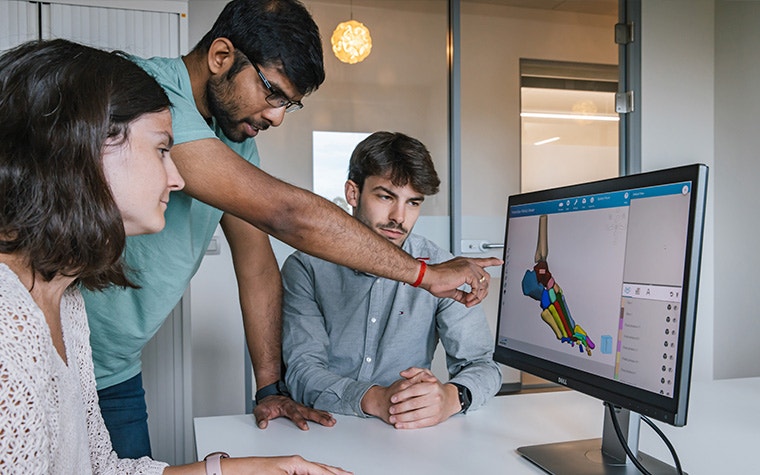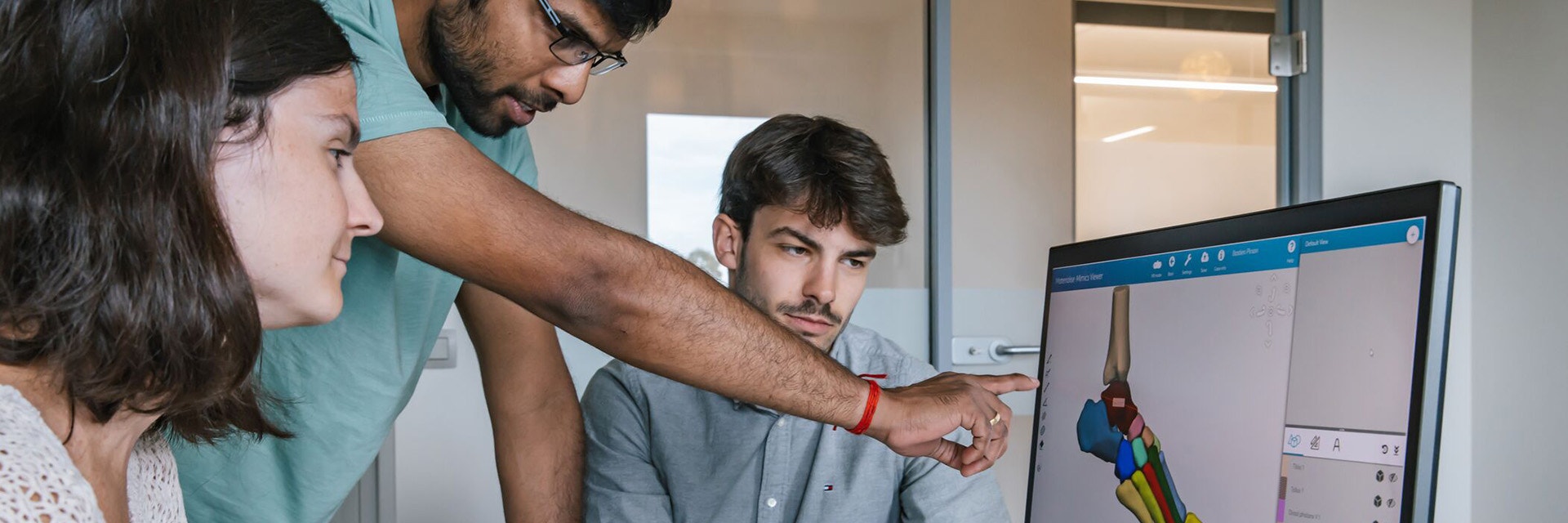CUSTOMER STORY
Scaling Orthopaedics: restor3d’s Journey to Personalized Care at Scale

Orthopaedic care is entering a new era of personalized treatment. One where implants and surgical instruments tailored to individual patients can lead to better outcomes, shorter recovery times, and reduced pain. However, achieving true personalization at scale in this field still presents significant challenges, including time-intensive workflows, operational bottlenecks, and maintaining consistent quality across cases.
Automation is emerging as the linchpin for overcoming these obstacles, empowering companies to scale personalized workflows efficiently without compromising precision or adding excessive costs. A noteworthy example of this innovation is with restor3d, a pioneering orthopaedic company that’s leveraging automation to deliver mass personalization at scale.
Why and when is it necessary?
Automation becomes indispensable as companies scale their operations, particularly during periods of rapid growth such as clinical trials or market expansion. Relying on manual scaling methods, like hiring more staff, often leads to training delays, inconsistent quality, and increased risk of human error.
restor3d recognized the importance of adopting automation early to build operational resilience and ensure smooth onboarding as case volumes increased. Their approach demonstrates how automation can reduce variability, enhance workflow efficiency, and handle growth without sacrificing quality.
How restor3d automated repetitive tasks
restor3d took a forward-thinking approach to automation, integrating tools like Python scripting supported by an intuitive graphical interface and AI-enabled technologies into their workflows. These solutions helped streamline time-intensive processes, allowing engineers to focus on solving complex problems rather than repetitive tasks.
Hannah White, Head of Automation and AI Engineering at restor3d, shared several impactful examples during a recent webinar:
- Automated design steps: Python scripts were used to integrate cut slots and pin locations into designs, drastically reducing manual input time
- Implant sizing and placement tools: automated sizing and placement algorithms ensured precise and consistent results across cases, while minimizing variability
- Patient-specific guide design: engineers were able to quickly generate customized surgical guides, cutting case times significantly
Reshaping engineering workflows and business operations
These innovations have reduced the time required for design processes from 8 – 12 hours per case to just 1 – 2 hours — a dramatic improvement that has transformed their ability to scale operations. Automation hasn’t just optimized workflows at restor3d; it has fundamentally reshaped how the company operates and grows without compromising quality. By eliminating mundane tasks, engineers have been empowered to focus on innovation, problem-solving, and high-value activities.
Key benefits of automation include:
- Enhanced consistency: automated processes ensure predictable and reliable results, reducing the risk of variability or human error
- Streamlined training: new engineers can ramp up faster, as repetitive tasks are minimized, allowing them to focus on mastering the core aspects of their roles
- High throughput: restor3d has achieved scalability without inflating costs, making mass personalization commercially viable
Hannah White summarized the impact well, stating, “The script doesn’t replace the extensive knowledge and training that our engineers possess, but it simply eases the process by putting the necessary tools right at their fingertips when they need them — taking away the monotonous tasks for each step.”
Start small to achieve big results
restor3d’s journey with automation offers valuable lessons for other companies looking to scale personalized solutions. Automation isn’t just a technological upgrade — it’s a strategic enabler that drives operational efficiency, reduces costs, and ensures consistent quality at scale. Their success shows that starting small — such as automating basic tasks like report generation — can pave the way for broader workflow optimization and innovation.
Cross-functional collaboration is key to success, ensuring alignment between engineers, clinicians, and software experts. With the right tools and expertise, Materialise can help support these goals, empowering organizations to scale personalized care effectively without compromising quality.
L-104605-01
Share on:
You might also like
Never miss a story like this. Get curated content delivered straight to your inbox.
